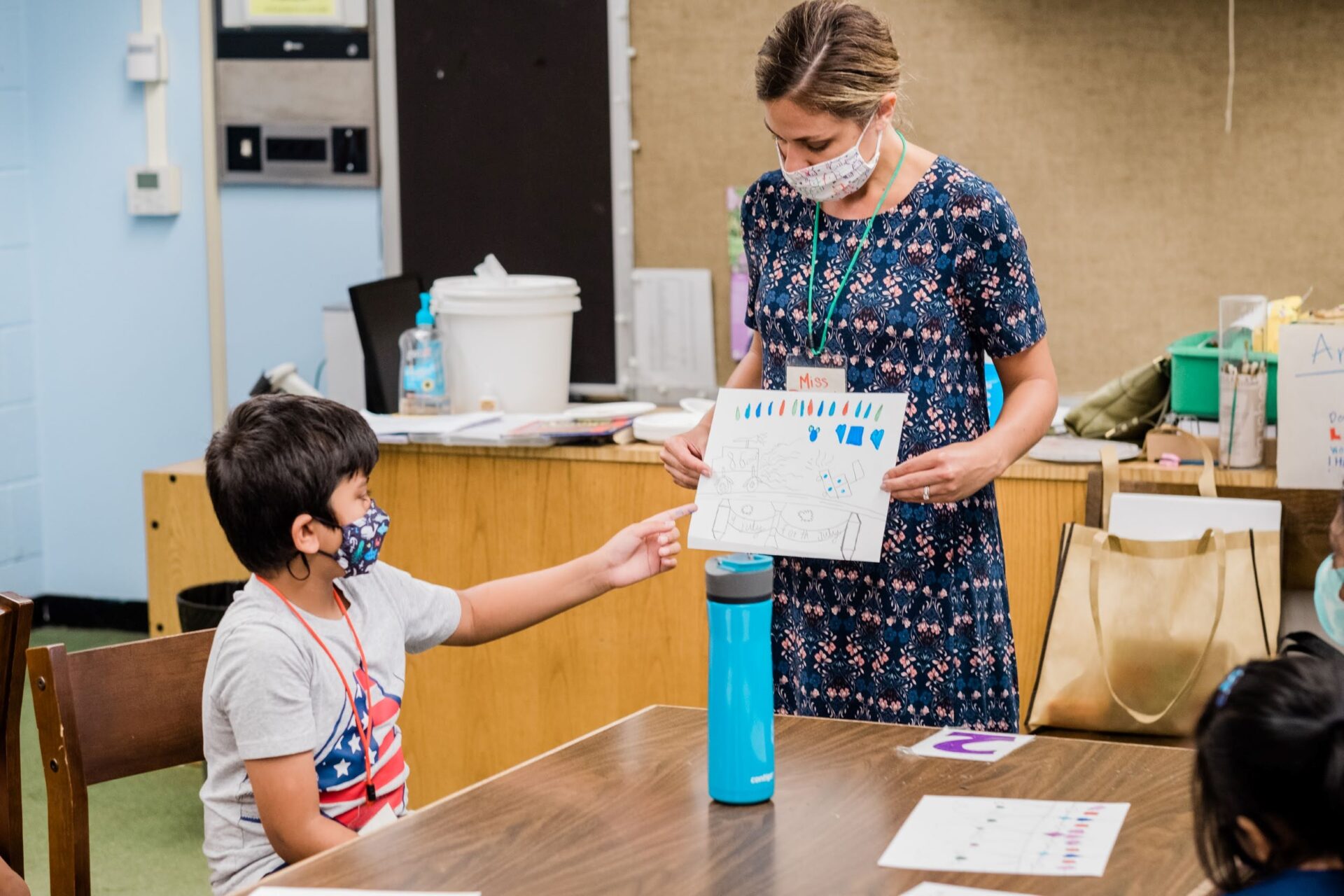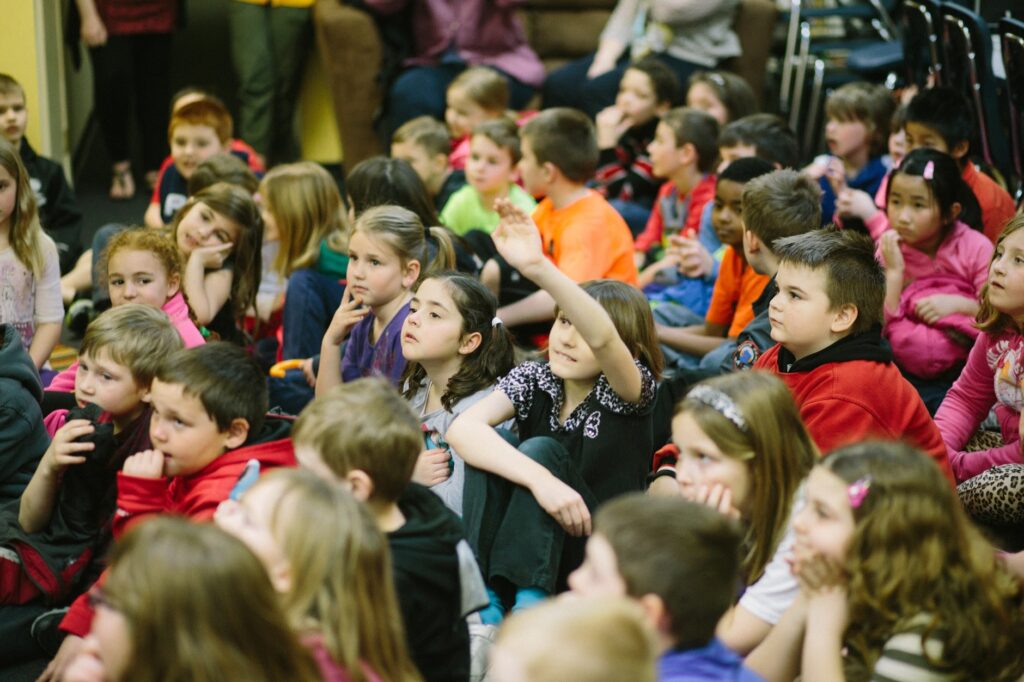Time, research, and exemplary schools share some common threads for implementing Personalized Learning, an approach that centers each learner’s strengths, needs, and interests: They all embrace a sustainable, scalable, and equity-based model.
For many schools, this means meaningful change, which, even when guided by the right tools and conversations, takes time.
But there are plenty of small ways to cultivate personalized learning practices inside a school or classroom, even if a district is still working towards systemic transformation.
Here are a few ways you can embrace Personalized Learning practices this fall.

1. Listen to learner and educator voice
At its heart, Personalized Learning puts learners—both students and staff—at the center of education. The easiest way to integrate the spirit of the approach is to listen and engage with learners one-on-one.
Educators can have conversations with students in person or in virtual environments. Last year, when operating remotely, Quaker Valley School District began hosting virtual office hours for students. Learners could meet with specific teachers individually on asynchronous learning days, helping them build stronger relationships, increase mastery of content, and further personalize instruction.
Similarly, Midd-West School District incorporated more personalized student counseling sessions during the pandemic, helping them connect more deeply with students and remove barriers to academic and other supports.
At Avonworth School District, school leaders created more time for educators to share with each other, which not only helped boost collegiality but expanded professional learning capacities.
For more ideas, listen to the youth takeover of the Remaking Tomorrow podcast, which features local student guests and hosts discussing what works well—and what doesn’t—in school.
2. Provide opportunity for choice
Personalized Learning relies heavily on student self-direction. How students reach their learning targets is up to them. They can choose how to demonstrate mastery, and in turn, they develop a much deeper understanding of the “why” behind their learning.
All this begins with letting students make choices that directly impact their learning. For educators, this means relinquishing some control, taking a step back, and allowing learners to step forward.
As ISTE’s Standards for Educators puts it, educators should aim to “foster a culture where students take ownership of their learning goals and outcomes in both independent and group settings.”
In practice, this could take the form of a mini-lesson, followed by a menu of options for students: Do they prefer to read their text in hardcopy or digital? Do they want to read independently or read along as they listen to a story? Do they want to take written notes or record them aloud?
Ultimately, leaders and educators should give learners choices in how they access and engage with learning as well as how they demonstrate mastery of their learning.
3. Use a variety of assessments
Just as educators should embrace multiple pathways for student learning, it’s also helpful to embrace multiple, incremental assessments.
In-progress assessment, known as formative assessment, allows educators to guide students throughout their learning, rather than waiting until a final exam, project, or another key benchmark.
In her guest post for ISTE, educator Robyn Howton explains how she uses a variety of methods for formative assessment.
“My video lectures often include interactive questions to assess [students’] understanding of the material,” she writes. “Playposit and TED-Ed: Lessons Worth Sharing are my go-to tools…and our classroom is often noisy and active as we play a round of Kahoot, which gives me instant, actionable feedback on what we need to do next, who needs to be pulled into a small group for reteaching and who would be better off in a group that pursues extended learning while I reteach the rest of the class.”
Tools and strategies like discussion threads, self-grading quizzes, and monitoring student work on Google Docs are also options for collecting formative assessment data. Howton recommends teachers try splitting large assignments into smaller steps that students can turn in for feedback.
Learner self-assessment and peer assessment also support personalization. They give learners the power and insight to know where they are in the learning process, rather than relying on someone else to let them know how they are doing and what to do next.
4. Connect with out-of-school organizations
During the Remaking Tomorrow Panel on Innovative Teaching & Learning’s listening sessions, many local schools revealed how they connected more with external partners during the pandemic. Organizations like historical societies, libraries, and nonprofits worked with schools to provide tutoring and resources, like books, school supplies, and computer/wifi access.
This year, you can leverage similar partnerships to deepen your Personalized Learning practice.
Out-of-school spaces are the perfect setting for students to explore the interests and aspirations they’ve uncovered through personalized classroom learning. Equipped with a clear sense of their strengths, skills, and goals, they can embark on personalized learning experiences, such as project-based learning in a maker space, a hands-on history lesson at a museum, or outdoor learning in the park.
5. Collaborate and network
Now is the perfect time to connect with the Personalized Learning Working Group! We bring together a diverse group of educators and community members to reimagine education practice and policy. We’re working together to define strategies and achieve key outcomes that will increase personalization and learner agency.
Reach out to us to learn more, at OlsonA@knowledgeworks.org or PhillipsL@knowledgeworks.org.
